There’s a lot that goes into delivering an amazing customer experience. But when you break it down to the basics, understanding your customers is a critical precursor.
Customer insights analytics provide the necessary data to improve the customer experience from start to finish.
What Is Customer Insights Analytics?
This involves using analytics for the specific purpose of understanding customer behaviors, preferences, and trends.
It’s also used to identify issues that could potentially hurt the customer experience.
By generating objective data, this form of customer analytics allows you to measure the end-to-end customer experience so you can continually refine and improve it.
This is important for three main reasons.
First, you can leverage customer data to understand what the current customer experience is like.
Say, for example, you wanted to know what percentage of customers returned after using core product features. You could look at consumer insight analytics to see what that percentage is over time.
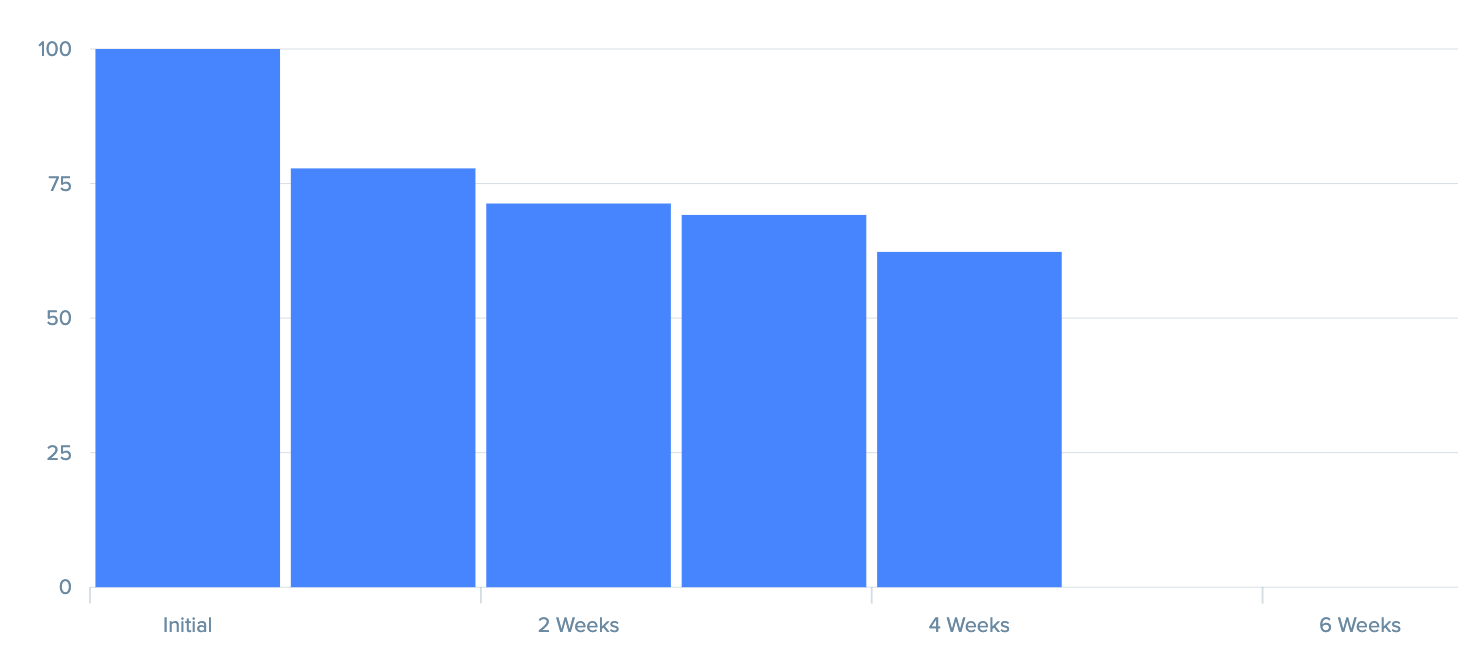 Woopra customer insights analytics dashboard
Woopra customer insights analytics dashboard
Second, you can improve the customer experience.
By identifying specific pain points in the customer journey, you can prioritize areas to address to 1) drastically reduce friction and 2) further optimize the areas you’re succeeding in.
Third, you can get your business firing on all cylinders because the improvements you make to the customer journey should inevitably result in a more seamless customer experience, higher conversions, less customer churn, stronger customer loyalty, and so on.
To generate this data, you need to be tracking and analyzing the right data points using a mix of both prescriptive analytics and predictive analytics. And that’s the focus of this post.
9 Customer Insight Data Points to Track and Analyze
1. Customer Surveys
Data from customer surveys tends to be a good starting point for understanding the customer experience from a broad perspective.
And generating the data is pretty straightforward. Simply ask customers to complete a brief survey that hits on the key areas you’re most interested in.
If, for instance, you wanted to know if customers find your website easy or difficult to navigate, you could ask them a question like this.
 Source: Bazaarvoice
Source: Bazaarvoice
Or if you wanted to know what customer sentiment for your brand is like, you could ask a question like this.
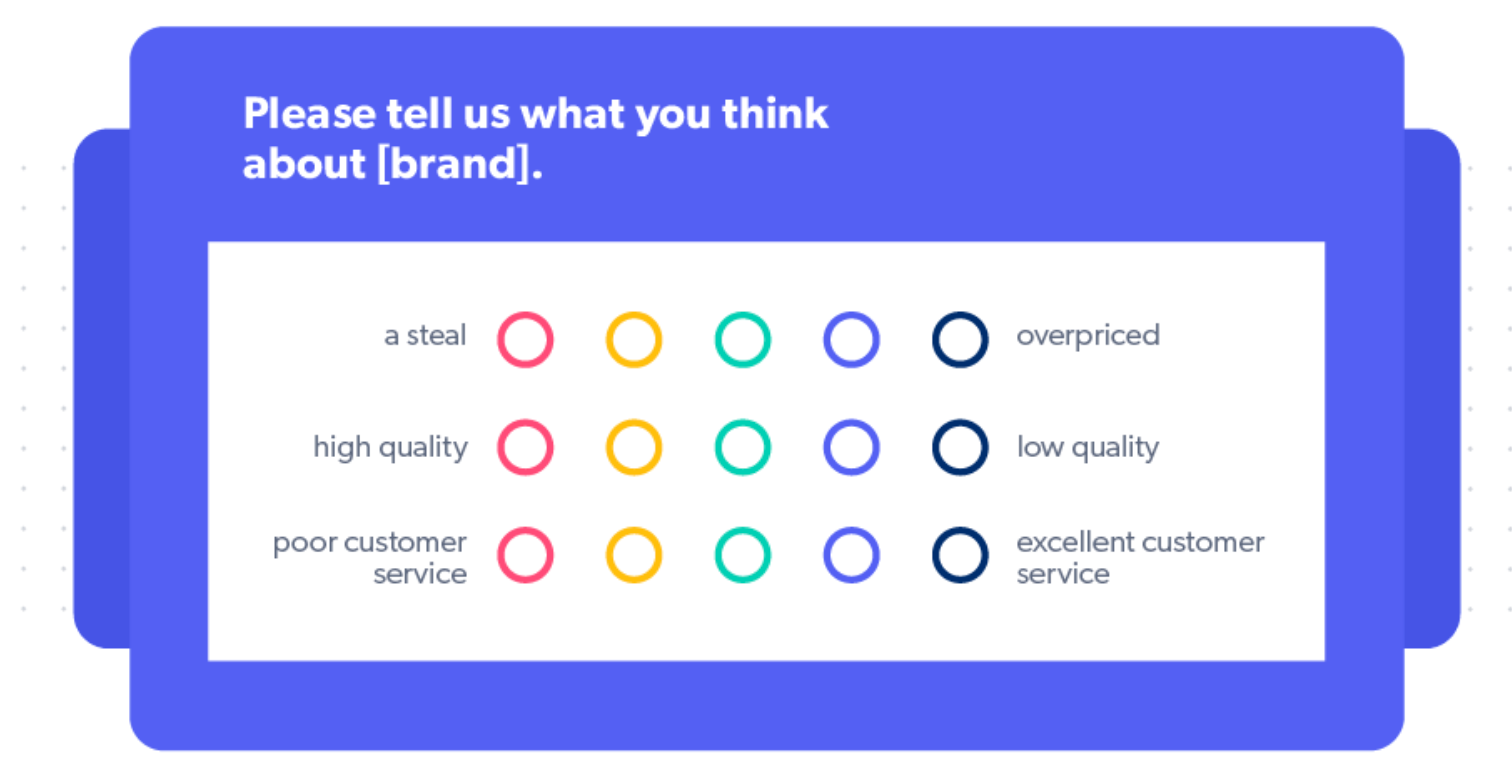 Source: Bazaarvoice
Source: Bazaarvoice
By analyzing customer responses at scale (“200 responses will provide fairly good survey accuracy under most assumptions and parameters of a survey project, [while] 100 are probably needed even for marginally acceptable accuracy”), you should have the customer data needed to understand consumer behavior, customer satisfaction, friction points and more.
You can then implement data from customer surveys to improve everything from your digital marketing strategy to sales techniques to customer service and beyond.
2. Customer Interviews
Although one of the more involved and time-consuming forms of customer analytics, customer interviews can provide truly meaningful insights.
If you’re looking for detailed data straight from the horse’s mouth, it doesn’t get much better than this.
And as Oberlo points out, customer interviews offer some distinct benefits that are basically impossible to get elsewhere, such as:
- Non-verbal reactions like body language
- Unplanned insights that organically arise during conversations
- “Learning the customer’s language” to better understand their mindset
 Source: Oberlo
Source: Oberlo
If you’re looking to really know your customers inside and out and know what makes them tick, we highly suggest using interviews.
The key to having success with this type of customer analytics is being selective about who you interview. Ideally, those who participate will be established customers with an intimate knowledge of your marketing campaign, product, and customer service.
Also, note that you may need to provide an incentive such as a discount or gift card to motivate customers to participate.
For guidance on how to get started with customer interviews, we suggest reading this guide.
By working interviews into your customer analytics mix, you should be better able to appeal to potential customers while also optimizing the experience for existing customers.
Not to mention, it can even aid in marketing research and help your sales and customer service team better cater to the needs of your customer base.
3. Online Reviews
If you have a solid digital presence, online reviews are another simple way to get unbiased customer insight on many aspects of the customer experience.
And with most consumers not holding back with their online reviews, you can gain a good understanding of their true perspective without any sugar coating.
The question is, where can you find reliable online reviews of your brand?
If you sell software like SaaS, G2 is an excellent place, as this is a robust platform with a heavy emphasis on product reviews.
Here’s the review section for electronic signature provider DocuSign on G2.
 Source: G2
Source: G2
Another popular resource for online reviews is Trustpilot, which runs the gamut in terms of its business categories.
Here’s just a small sampling of some of the categories Trustpilot has reviews for.
 Source: Trustpilot
Source: Trustpilot
Or, simply googling the search phrase “[Your brand] reviews” should turn up plenty of results so you can start parsing through the data.
4. Customer Feedback
Customer feedback can come in many different forms. But there are two main types of customer feedback we suggest focusing on — Net Promoter Score (NPS) and direct customer support feedback.
NPS is a simple yet effective way to measure customer satisfaction by asking customers a single question.
“On a scale of 0 to 10, how likely are you to recommend our product or company?”
Based on the answer you receive, you can then place each customer into one of three categories:
- Detractor- A person who is unlikely to recommend your brand and could potentially discourage others from buying
- Passive- Someone who is neutral and unlikely to recommend your brand but also unlikely to discourage others from buying
- Promoter- Someone who is loyal and enthusiastic about your brand and likely to encourage others to buy (e.g. brand ambassadors)
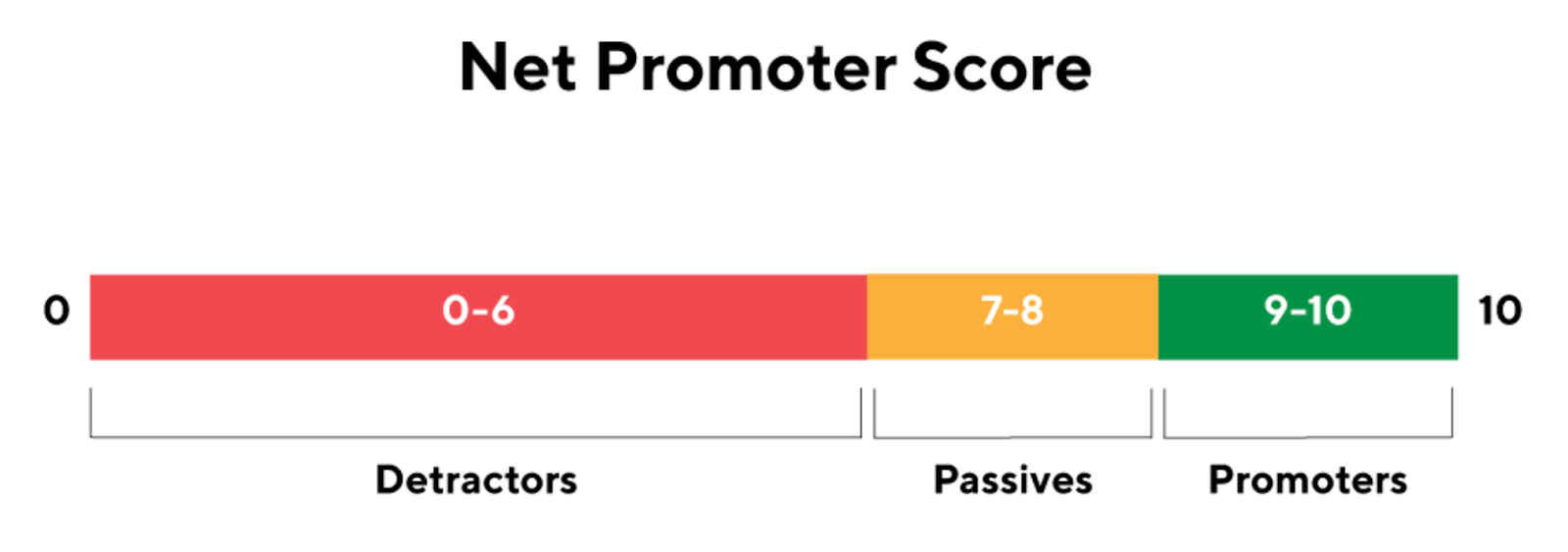 Source: ProductPlan
Source: ProductPlan
As for direct customer support feedback, this involves gaining insight into the customer experience by tracking and analyzing inquiries, questions, complaints, and any other feedback that comes through customer service.
For example, if a large volume of customers complained about having difficulty using a particular product feature, adjustments would likely need to be made to improve that feature.
5. Customer Journey Analytics
The modern customer journey can be incredibly complex and convoluted, with numerous touchpoints along the way.
With customer journey analytics, you can analyze every single step of the customer journey to identify both obstacles and opportunities to ensure you consistently meet customer needs and provide the best experience possible.
Woopra, for instance, can provide you with a detailed overview of the customer journey, from the first time someone visits your website via a Google Ad to their free trial signup to when they upgrade to a paid product version to when they stop using your product.
 Woopra Customer Journey Analytics dashboard
Woopra Customer Journey Analytics dashboard
The data generated with this type of customer analytics can be hugely beneficial because you can objectively analyze each touchpoint and see where higher-than-average dropoff occurs.
And if you want to go more granular, you can analyze specific areas of the customer journey, like how blog engagement affects free trial signups…
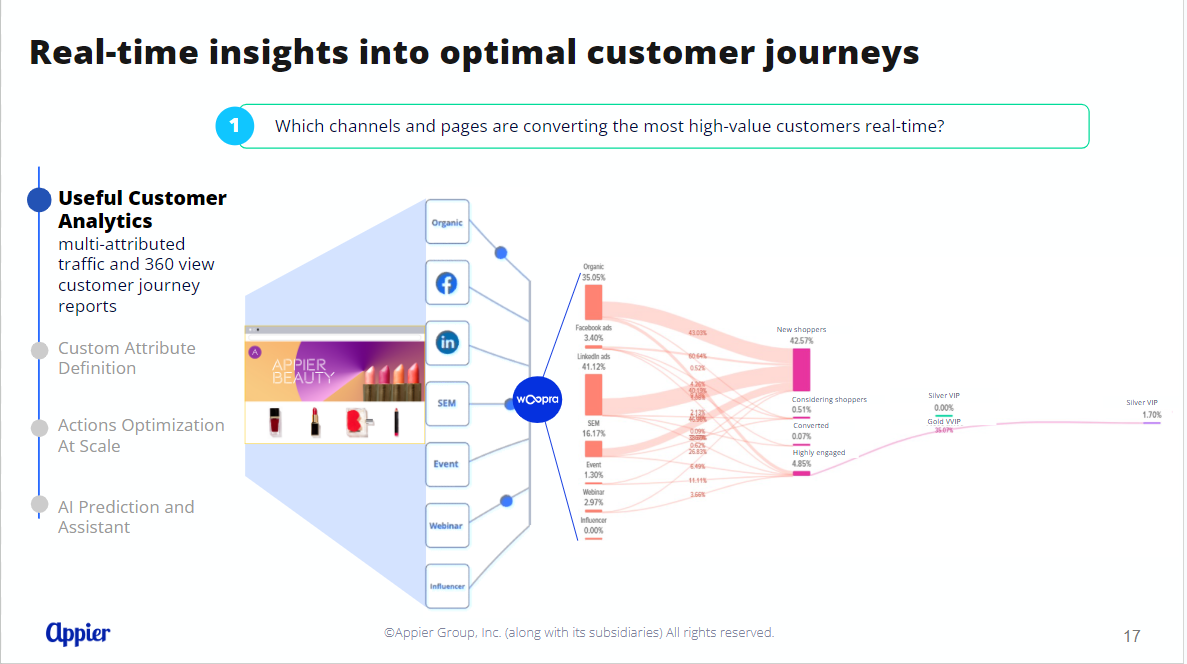 Woopra Customer Analytics dashboard
Woopra Customer Analytics dashboard
…or the onboarding experience to see how many customers you lose during this time.
 Woopra dashboard
Woopra dashboard
The best part is that you don’t need to be a data analyst or business administration expert to leverage Woopra customer data analytics.
A large volume of big data is broken down into simple visuals for intuitive customer insight to help you make better decisions with sales, marketing, customer service, and more.
And with artificial intelligence being increasingly intertwined with data analytics, customer analytics capabilities are only becoming more advanced.
6. Product Testing
Because your product itself has such a tremendous impact on the customer experience, performing product testing can also lend valuable customer insight.
The more customer data you generate, the more you can refine and improve your product, which should set off a chain reaction of positive benefits. Everything from increasing customer satisfaction to establishing more loyal customers to increasing customer lifetime value.
In terms of the nuts and bolts of product testing, a good starting point for many brands is simply performing A/B tests to see what your customers respond best to.
You could, for example, test two different versions of a product feature side-by-side to see which one performs the best. Then, whichever version customers prefer would be the one you would want to stick with and promote in your marketing campaign.
Another technique is running limited product launches and analyzing the results before officially launching a product. That way you could get feedback and make the appropriate adjustments before releasing it on a large scale.
Besides that, you can use small customer group product testing to see how participants respond and implement their feedback accordingly.
7. Market Research
While market research is often thought of in the context of identifying a target market and product development, it can serve a much greater purpose.
For instance, a marketing team can use it to break down a customer base into different segments so they can better cater to each demographic of their target audience.
Market research can be used for competitive analysis to determine strengths and weaknesses and find potential opportunities to connect with consumers where competitors are lacking.
By generating qualitative and quantitative data through market research, a company can make smarter decisions to better appeal to their target audience as a whole, as well as each individual demographic for better customer segmentation.
In terms of mediums for generating data with market research, some of the more popular options include interviews, focus groups, customer interactions, and transaction data.
If you’re looking for a great beginner’s guide to performing marketing research, we recommend reading this one from HubSpot.
8. Social Media
Besides using social media for marketing purposes, it can also be a valuable resource for getting customer feedback and shopper insights.
This can be as simple as consistently monitoring your social media profiles for user comments, as this in itself can help you gauge customer sentiment fairly well.
Or, you can use social listening tools to track things like brand mentions and positive and negative interactions.
For instance, Brand24 is a social listening tool that neatly organizes this information into visual reports where you can see everything at a glance.
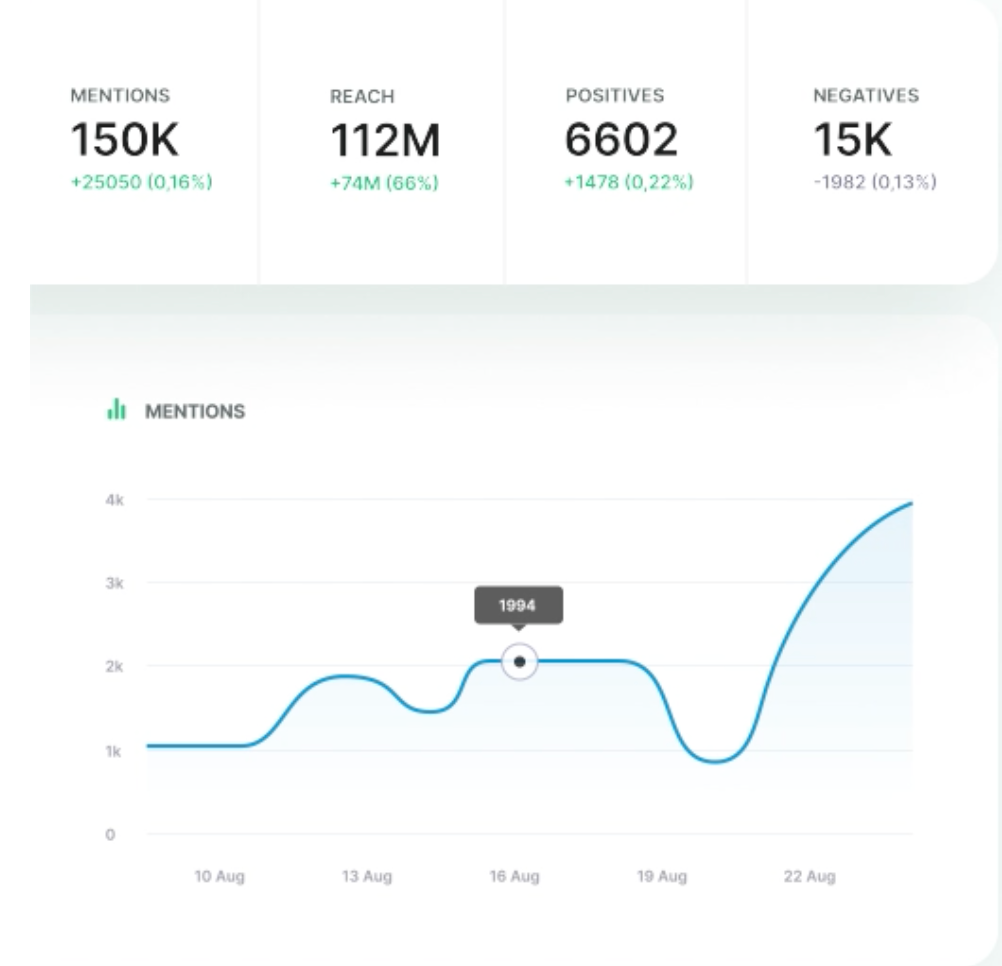 Source: Brand24
Source: Brand24
In addition to simply monitoring customer sentiment, a tool like this is also helpful because you can track how your reach increases (or decreases) over time and quickly address negative publicity before it escalates.
If social media marketing is one of your core marketing strategies, it can be a goldmine from a customer analytics standpoint.
9. Churn and Customer Reviews
Although churn isn’t pleasant, it’s an inevitable part of the SaaS customer lifecycle.
While a certain amount of churn is normal, it’s always something you want to keep in check and continually monitor to ensure it doesn’t get out of hand. This too is something you can closely monitor with a customer analytics tool like Woopra. (Google Analytics won’t quite get you there; you need something more robust).
With Woopra, for instance, you can track customer engagement and churn over time to see if it’s acceptable or if there are potential issues that are hurting your customer retention rate.
 Woopra Enterprise Engagement and Churn dashboard
Woopra Enterprise Engagement and Churn dashboard
As for retail/eCommerce, you’ll want to track returns, as a higher-than-normal number of returns can eat your profit margins and can also be detrimental to the customer experience.
Paying close attention to customer reviews can also provide actionable insight into what the consumer experience is like and what you can do to improve.
Building a Customer-Centric Company Through Customer Analytics
From understanding the nuances of customer behavior to increasing customer satisfaction to driving business success and beyond, customer analytics deliver the data necessary to take your company to the next level.
It’s just a matter of tracking the right analytics data points covered above.
Doing so kills two birds with one stone, as it creates a far more enriching experience for your customers while also laying the groundwork for long-term success.



